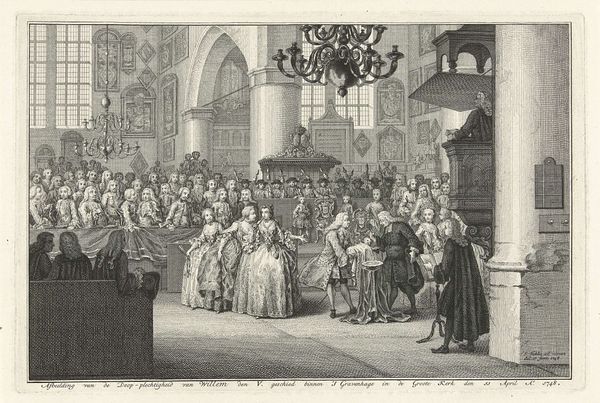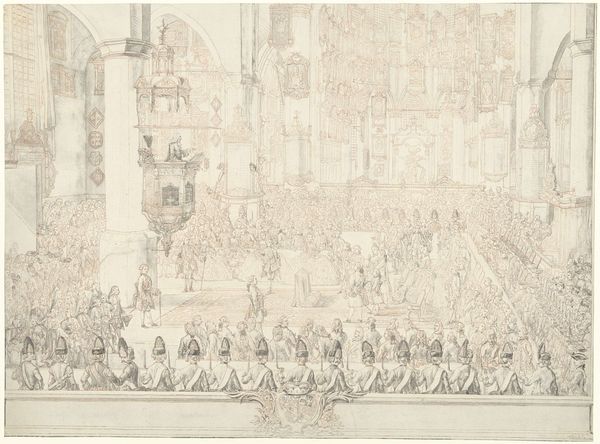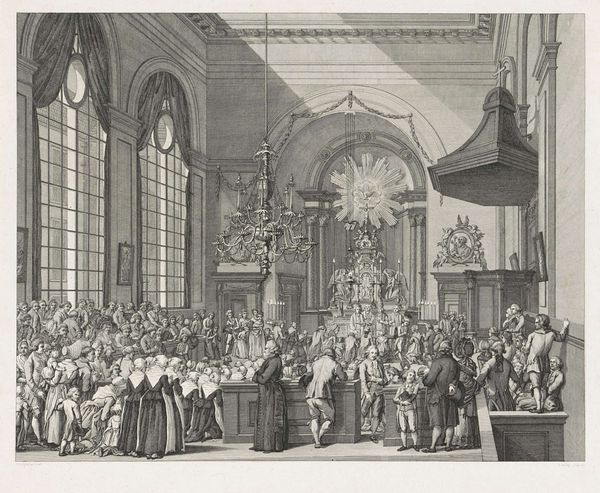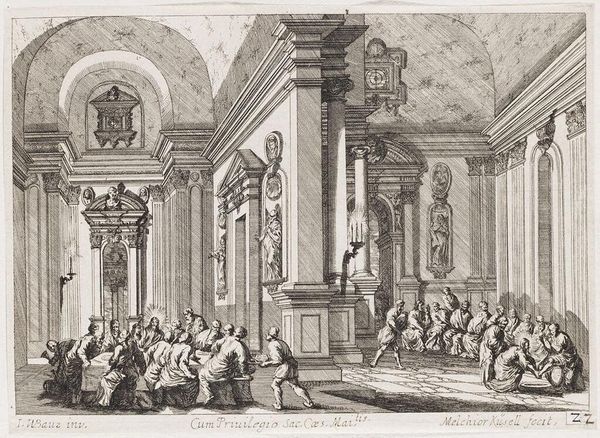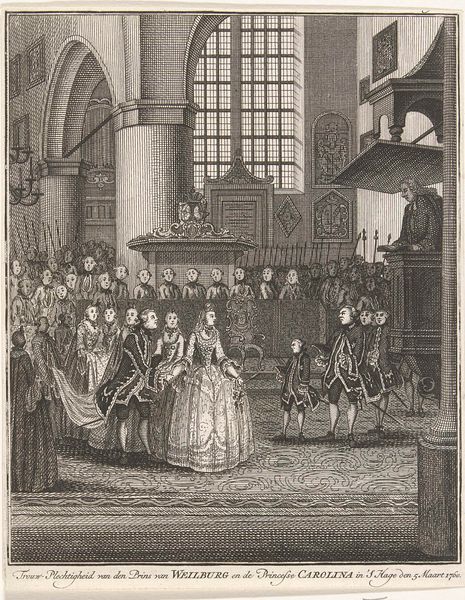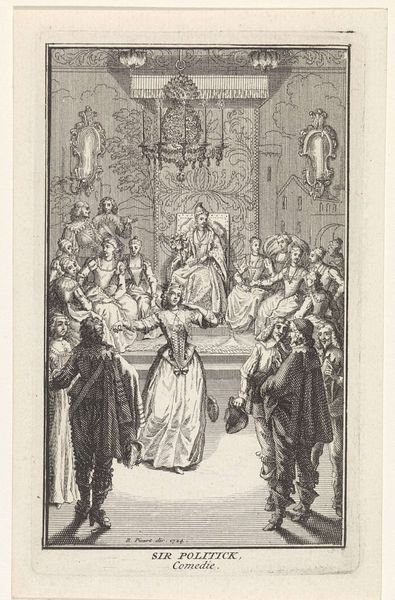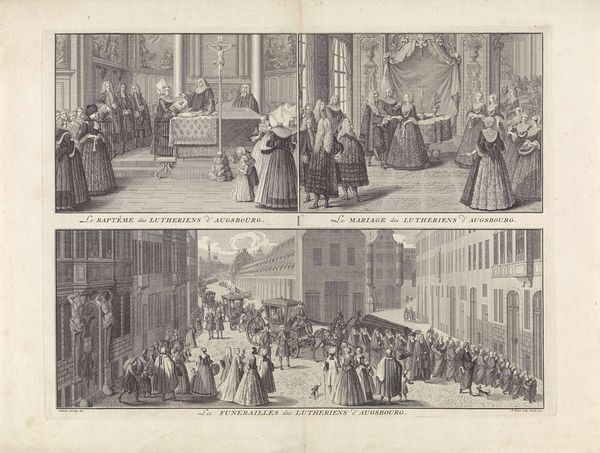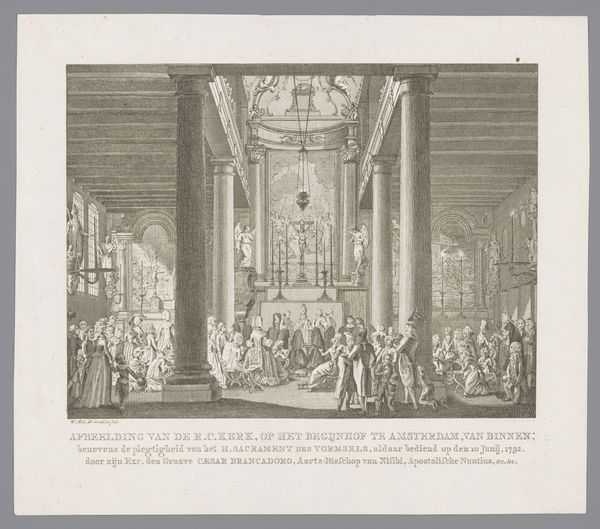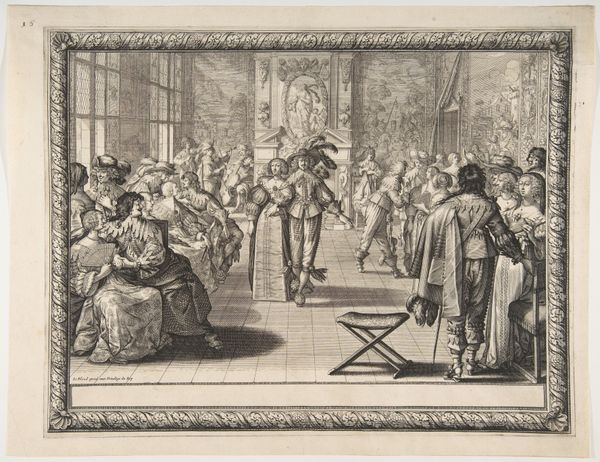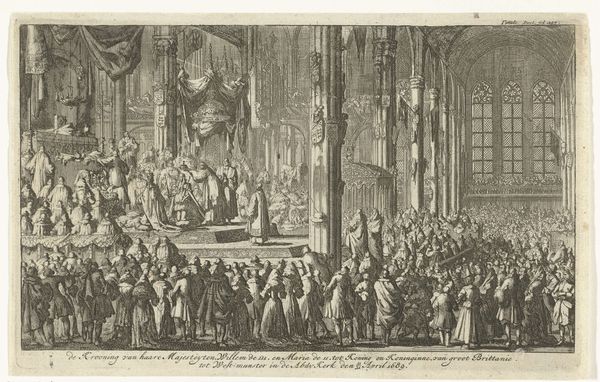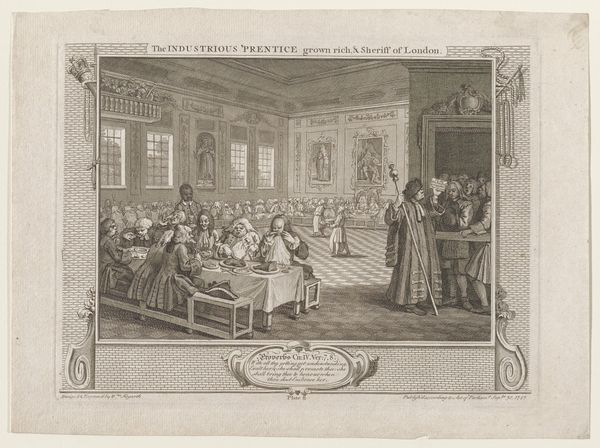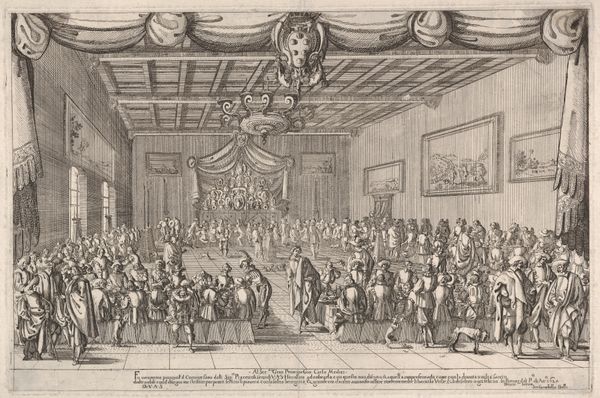
drawing, paper, ink, pen
#
drawing
#
pencil sketch
#
sketch book
#
paper
#
ink
#
pen-ink sketch
#
pen
#
genre-painting
#
history-painting
#
rococo
Dimensions: height 175 mm, width 260 mm
Copyright: Rijks Museum: Open Domain
Curator: This delicately rendered drawing captures a significant moment in Dutch history: the baptism of Prince William V in 1748. Simon Fokke used pen, ink, and pencil on paper to create this detailed scene. What impressions does it give you? Editor: It’s immediately striking – such a formal occasion rendered with such airy, almost whimsical lightness. The scene overflows with meticulously depicted figures, but there is an accessibility to it, a story unfolding. Curator: Exactly! Fokke's choice to portray this royal event through drawing, rather than a grand painting, humanizes it, allowing viewers a sense of proximity to power. Consider the iconography in the church – those armorial achievements on the walls speaking to the deep lineage being continued with this baptism. Editor: And the chandeliers! They seem almost too large, cartoonish, casting a democratic light, both physically and metaphorically, onto the proceedings below. There’s something almost theatrical about the arrangement, don't you think? A constructed performance of dynastic continuity? Curator: Indeed. The Rococo style lends itself well to that theatricality. All those frills, flourishes, and decorative touches. Each detail carries symbolic weight. The setting itself, undoubtedly a site imbued with centuries of religious and civic power, becomes a stage upon which the drama of succession plays out. It is interesting how, while the central figures of the prince and his godparents are prominent, Fokke still pays incredible attention to the mass of onlookers. What do you make of them? Editor: It does invite that sociological perspective. Each person, though tiny, feels individualized. Fokke’s conveying something about the participation, the witness, of the public in this moment of royal transition. He presents us with not just an image of power, but an image of the performance of power. It’s incredibly deft political imagery. Curator: Yes, by emphasizing the collective presence, Fokke subtly reinforces the idea that royal power derives, at least in part, from the consent and observation of the governed, a particularly loaded claim during a time of significant political upheaval in Europe. This rendering becomes far more than a snapshot of baptism; it embodies an entire understanding of societal structures and how visual representations were designed to reinforce them. Editor: A truly fascinating and layered image. Curator: Absolutely, a lens through which we can view both a historical moment and the broader political theatre of the 18th century.
Comments
No comments
Be the first to comment and join the conversation on the ultimate creative platform.
